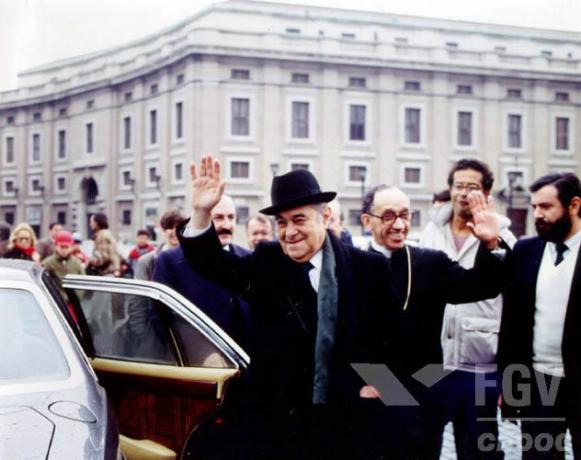THE Middle Ages can be defined as the period between the fall of the Western Roman Empire, in 476, and the fallinConstantinople, capital of the Byzantine Empire. The city was conquered by the Ottoman Turks in 1453, with the formation of European National States at the same time, giving rise to the period called the Modern Age.
However, this temporal division concerns the Europe, since one cannot speak of a Middle Ages in pre-Columbian America, for example. It was European historians who carried out this division of world history, based on the changes verified over time in that continent.
THE Middle Ages is divided into two periods. The first period is that of the High Middle Ages, between the 5th and 11th centuries, and the second is that of the Low Middle Ages, which took place between the 12th and 15th centuries.
THE High Middle Ages, which began with the fall of the Western Roman Empire as a result of the invasions of barbarian peoples, was marked by the process of ruralization of European society. Fleeing from the barbarian attacks, the peoples of the Roman Empire who lived in the cities started to head for the countryside, as a way to protect themselves from the attacks. With the attacks and the permanence of the barbarians in the conquered territories, little by little a new social formation emerged, resulting from the mixture of Roman and Germanic institutions.
It was during this period that the barbarian kingdoms were formed, such as the Kingdom of the Franks, which after a process of unification of some regions gave rise to the Carolingian Empire. It was also in the High Middle Ages that the Catholic Church came to have the religious and cultural supremacy of the continent, becoming the great dominant institution of the period, as it also had large numbers of of land.
In terms of economic and social organization, it was in the High Middle Ages that the feudalism as a production system. The servitude relations between lords and peasants, and the vassal relations between different feudal lords, strengthened in this long period of European history. It is worth noting that it was during this period that the Byzantine Empire peaked and the Muslim civilization expanded.

Fresco from the monastery of Mileseva, Serbia. Religion was the main theme dealt with in the artworks of the Middle Ages
THE low middle age it was the period in which the disintegration of the European feudal world began. The consequences of the crusades in the commercial sphere provided a revival of trade with the Orient from the 12th century onwards. Another renaissance of the period was the Urban Renaissance, resulting from trade in fairs in the interior of the continent, which led to the expansion of cities. These changes gradually resulted in the decline of Catholic cultural power, making room for knowledge based on that was left over from the culture produced by the Greeks and Romans, who found diffusion in universities created from the 20th century onwards. XII.
The commercial and urban renaissance also led to the gradual disintegration of the feudal system, transforming the personal relationships of servitude and vassalage in impersonal relationships mediated by money, especially within the cities. Changes in work regimes, such as crafts in craft corporations, created the foundations for the emergence of capitalism. The end of the Low Middle Ages was also marked by the realization of the Great Navigations and the beginning of the centralization of political power that resulted in the formation of National States.
The Middle Ages came to be called by Renaissance thinkers the Dark Ages, due to the supposed disappearance of the Greco-Roman culture effected by the barbarian invasions and the domination of the Church. For these thinkers, religious domination had left ancient knowledge in darkness. This perspective does not correspond to what actually happened, as the old knowledge was kept, for otherwise these thinkers would not know of the existence of the knowledge produced by the Greeks and Romans.
By Tales Pinto
Graduated in History

